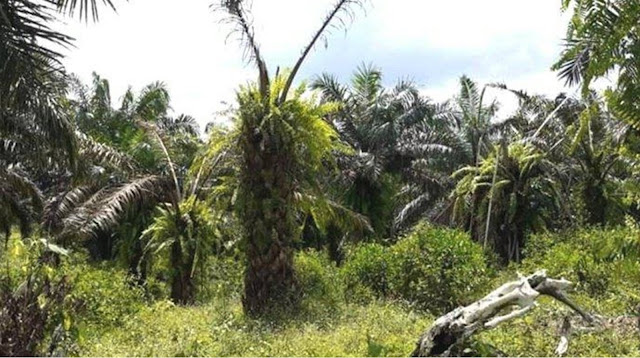Replanting is a replanting activity in oil palm plantations that have old and unproductive oil palm trees. When viewed from the entrepreneur's point of view, it is recommended that oil palm plants that are 25-30 years old be rejuvenated so that oil yields do not drop too drastically. At this stage, careful and detailed planning is needed to avoid the risk of large losses.
The activities of rejuvenating oil palm plantations must also pay attention to the geographical conditions of the oil palm plantations. In planning and replanting oil palm in hilly areas it is very different from lowland areas. Therefore, the planning stage must be very detailed, both in terms of provision of funds, labor and tools that will be used in the future.
What are the benefits of oil palm rejuvenation?
Replacing unproductive oil palm plants with new plants, either gradually or in whole. To maintain and increase the productivity level of oil palm plantations.
 |
The stages of oil palm rejuvenation are:- Old Plant felling
- The felling of old oil palm trees uses poison herbicide paraquat or diquat. Demolition of the plant uses an excavator by cutting the large oil palm roots that are near the base of the trunk and the soil surface.
- Unload the staple and shove the stem
- The goal is to reduce / kill the spores of the Ganoderma boninii fungi.
- Stem and Branch Enumeration
- Aims to reduce the size of the trunk and branches of the oil palm into several chunks that are 15-20 cm thick. With a smaller size, the process of rotting the trunk and branches of the oil palm can take place in a shorter time.
- Fertilization of land
- Oil palm stems and branches that have undergone perfect decomposition can be used as compost to fertilize the land.
- Ground Cover Planting
- Legume Cover Crop (LCC) is needed for plantations that are being replanted. The plants used come from legumes such as Calopogonium mucunoides, Pueraria javanica, Centrocema pubescens, Caloppgonium caerelium, and Mucuna brachteata.
- Land development
- The erection work is intended to facilitate the process of planting oil palm seeds later. This is done by installing stakes as a sign of making oil palm planting holes according to the planned spacing. A good erection must also be able to provide signs for the construction of roads, ditches, terraces, and planting ground cover plants.
- Implementation of Soil Conservation
- Creating contour terraces, individual terraces, contour forts, rorak, and trenches.
- Making Planting Holes
- When digging, place the topsoil on the north and subsoil on the south. Then plug the stake in the side and center of the hole.
- Planting seeds
- The quality of the planted seeds will determine the level of production for the next generation, which is around 20-25 years.
Important requirements for oil palm plantations are:- Oil palm plants are between 25 - 30 years old
- Many plants have died
- Ton / Ha low production ± 15 tons.
|

